About a month ago (on February 11th) as it was a holiday, we went for a small day trip to Kurashiki in the Okayama Prefecture (by the way, it was and still is the only time I spent on Honshū since I’ve moved to Japan). We especially visited the neighborhood known as Bikan, which is a merchant neighborhood from the Edo Period.
Back then, Kurashiki was known as Tenryo and was directly controlled the Shogunate. It was a merchant town from where many local goods were “exported” (to Edo, I assume). At the time, the neighborhood was pretty much on the coast (today it’s about 10 kms inland) and many warehouses had been built along the Kurashiki river banks to load boats that would then depart at sea.
Those warehouses, pretty much all built in the same architectural style, still stand today and have been converted into museums, stores and numerous restaurants.
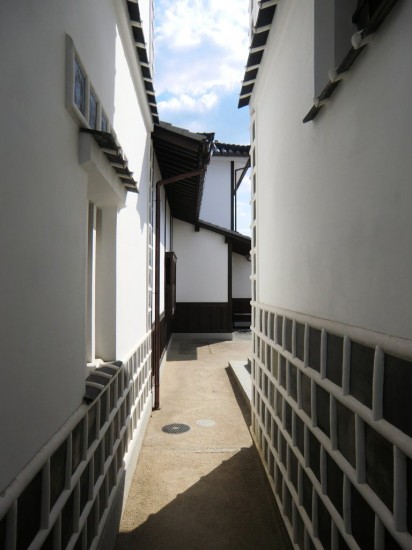
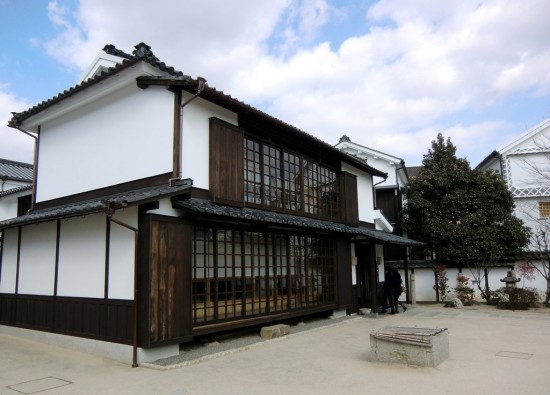
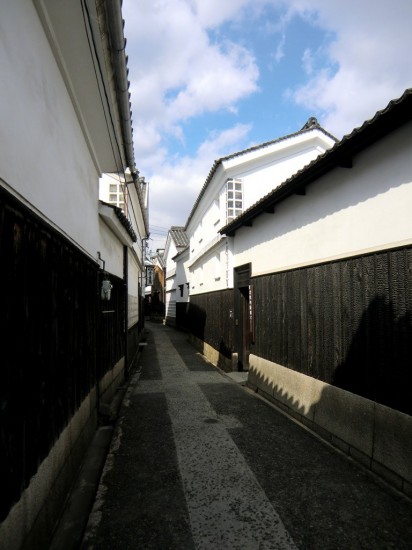
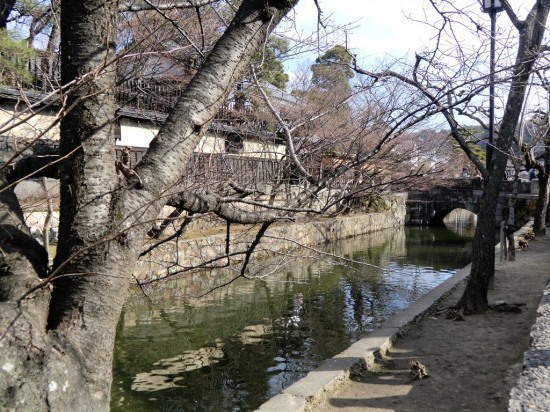
In Bikan, one can also find the Ohara Museum which was the first museum of western art to open in Japan in 1930. In the very beginning, one could only find French artists, but quickly many other European artists had their works exhibited in the museum and some cafés and boutiques seized to opportunity to adopt an “European” look (or at least names). Today, the museum also houses Japanese artworks by the way.
This building has a different architectural style from the other buildings in the neighborhoods. It is called Yorinso and belonged to the Ohara family (which as you can imagine was one of the most powerful or at least richest in the area). Its cooked tiles have a unique green coloration which gave its nickname “green palace” to the building.
Another notable place in Bikan is called Ivy Square (for obvious reasons). It used to be a spinning mill (it is more recent than the rest of the neighborhood, about 1890) and is now a hotel, with restaurants, cultural spaces, etc.
And as often when visiting a historical place, at least one temple is included in the visit, this time it’s called Achi-Jinja.
The presence of national flags on a temple surprised me at first, but it’s often the case on National Holidays, and it’s true that – in theory – Japan is not a secular country, although it is in practice much more secular than many countries that call themselves secular (but no politics on this blog).
To conclude, while it’s true that Bikan is a beautiful neighborhood, I must admit that I was not completely amazed by it. I’m not sure if it’s because it was Winter (and the banks of the Kurashiki river looked a bit depressing with all of those leafless trees) or if it’s because it was a holiday and there were a bit too many tourists for my taste (this is something I will have to get used to in Japan, as me too will be able to travel on holidays only for a while). I need to return there on a week day and during another season to have a different – and better – look at it.
In the meantime, I really advise you to go visit this place if you get the chance.
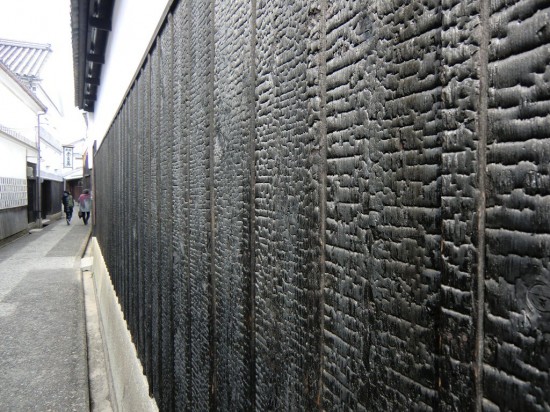
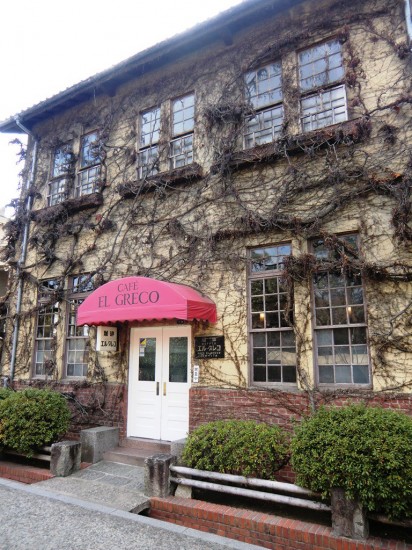
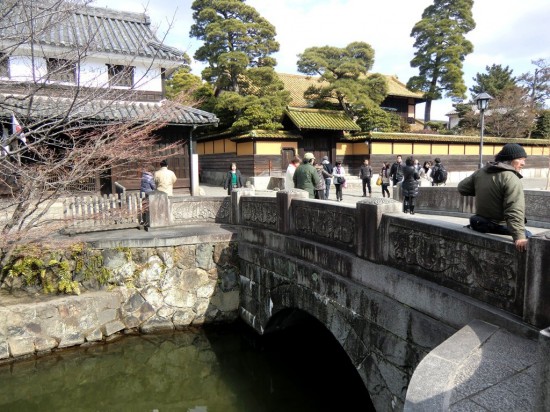
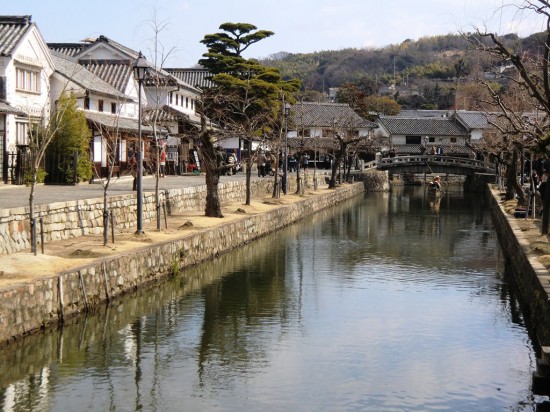
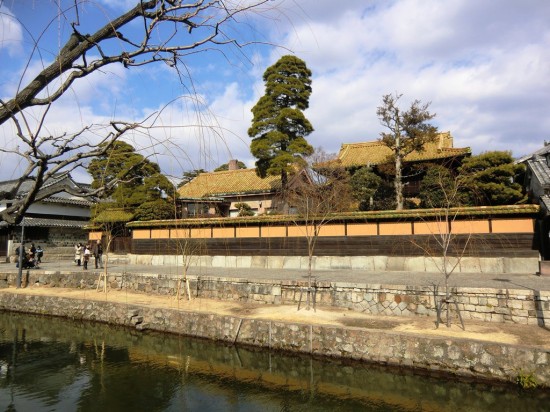
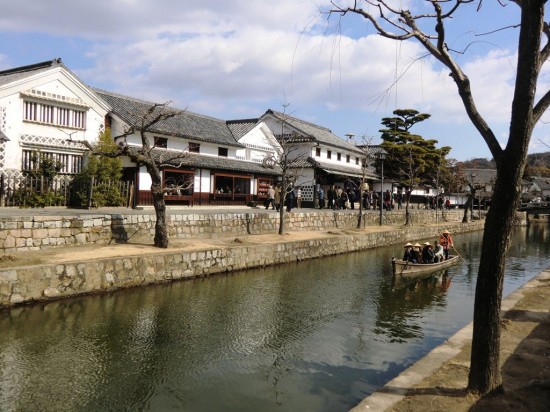
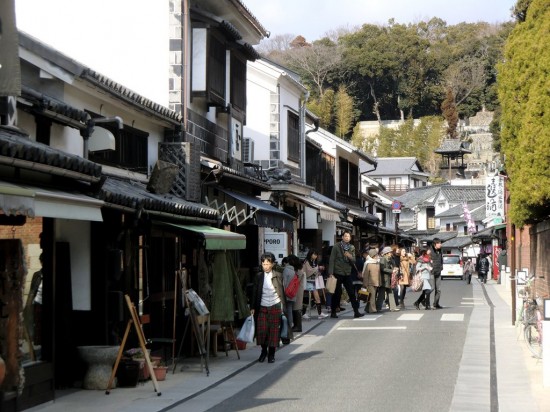
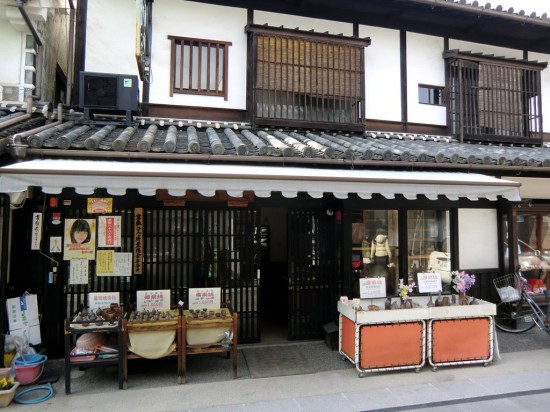
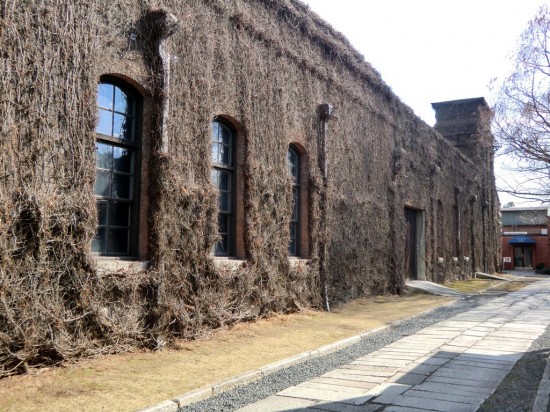
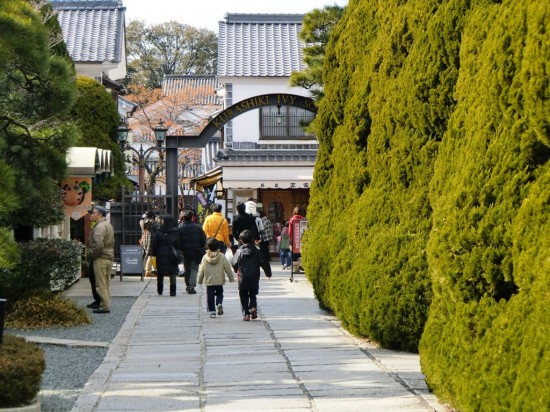
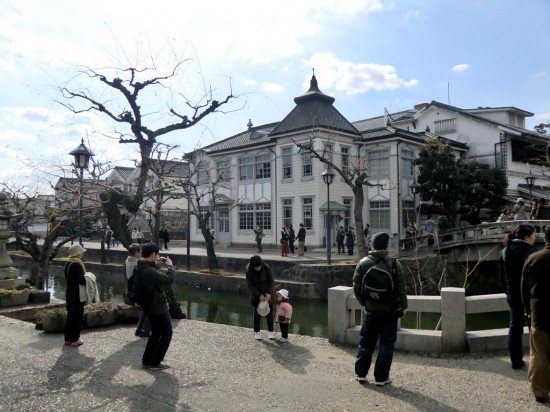
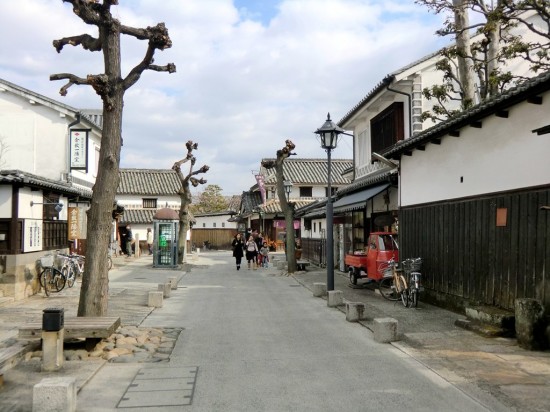
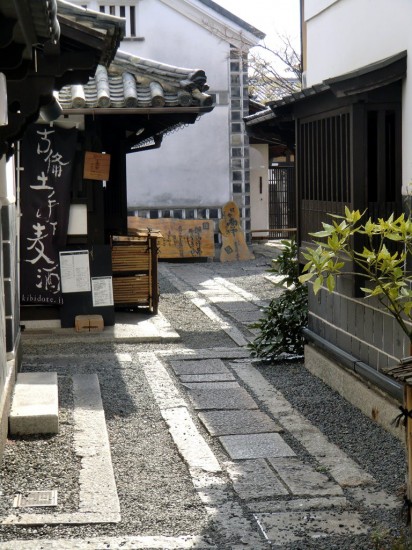
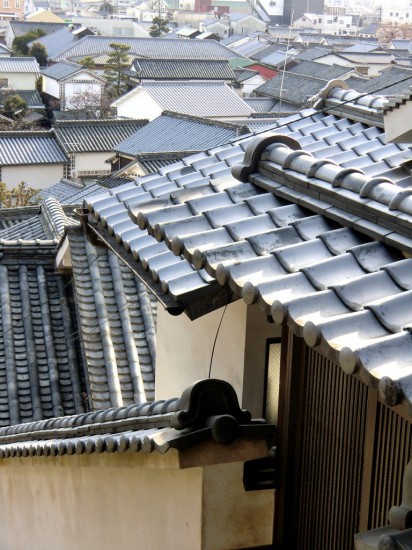
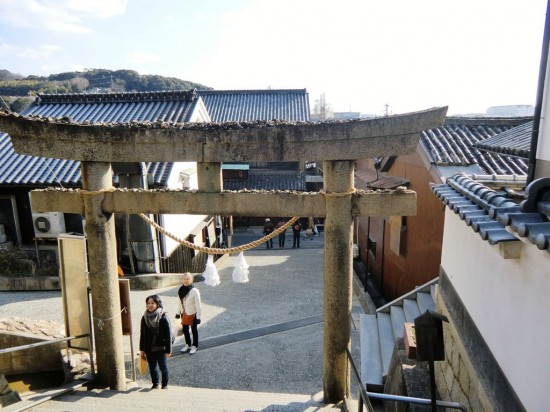
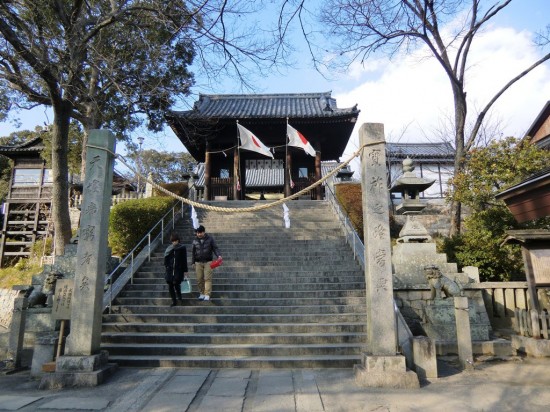
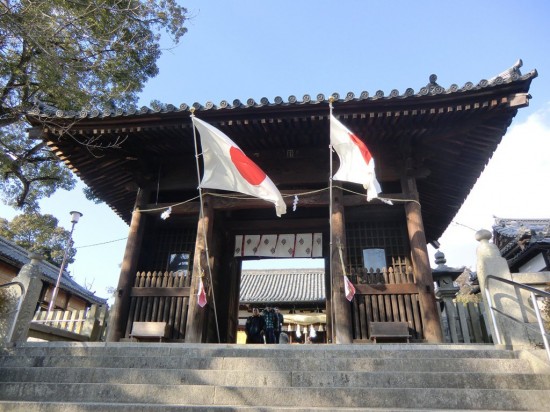
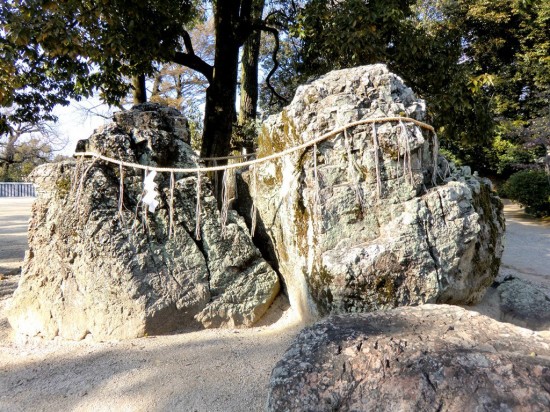
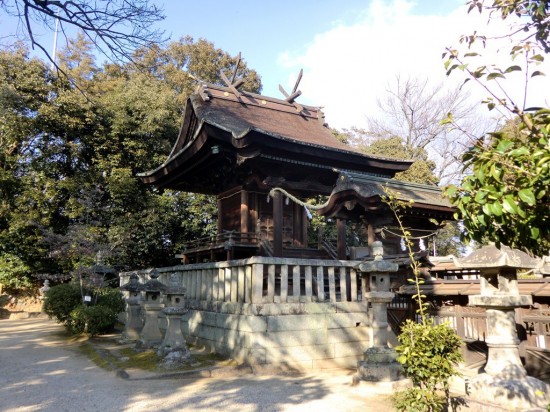
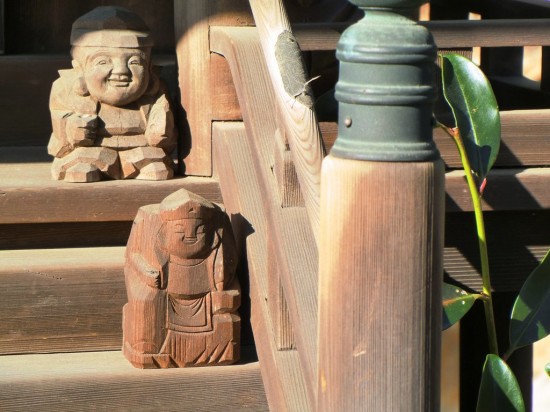
It is one of my favourite places in Japan and I’ve been lucky enough to have visited it several times. The 17th century wooden warehouses are amazing and love the beauty of the canal framed with weeping willows and filled with koi. Did you notice that the area has no electricity poles in order to make it closely resemble the look of the Meji period.
Yes I noticed about the electricity poles. Well, actually I knew about it, but I didn’t actually pay attention to them (or rather to their absence).
I guess it’s because I’m pretty used to this. In France too, while we have much less electricity/telephone poles than in Japan, historical towns (and there are a lot in my home area) tend to make them as little visible as possible.
Judging from your photo, it sure is a great place to visit.
It is.
It’s a beautiful place and I imagine it must look stunning in spring when all the trees are in leaf or blossom. Every town needs a river or canal running through it like Bikan. That’s something I miss from our 15 years in Ireland where our nearest town had a river and Cork city had the huge Lee at its centre. Still, we have our three lakes on our farm so I shouldn’t really complain …
Yeah, I really wish I could go in the Spring. Not this Spring though, I think all of my free days are already “booked”.
I agree with you for the river thing.
I always lived near a river except for the five years I spent in Florida, and I always thought there was something strange/missing in that town.
Takamatsu has many very small rivers. They’re not very pretty,with concrete walls everywhere. But the Seto Inland Sea beats any river any day.
I was in Kurashiki during the golden week for half a day. There where lots of tourists. Bikan is pretty, there is a nice crafts museum and shops that sell Bizen ceramics and quality toys.
I didn’t see those walls made of burned wood so I guess I have to revisit Kurashiki.
Bicycling on the nearby Kibi plain is also interesting, for the kofuns, rice fields and temples.
Hi Raymond, thanks for stopping by here.
I’m sure you saw the burned wood walls, they’re very common (not only in Bikan, but in the whole Seto coastal area).
I actually visited the Kibi plain on a bike too and it was very interesting indeed. I have yet to blog about it (if you can read French, you can find some posts on the French version of the site) but I was actually planning on doing a post on Bichu Kokubunji later this week. Stay tuned.
We went to Kurashiki around the same time in Feb, just one year apart =) It’s one of the must visit place in Okayama. Lovely and quaint street as well as friendly locals. Your pictures are lovely, offer another perspective of what I see. Will link this to my blog.
Hi Sarah and welcome here.
Thanks for the kind word and the link.